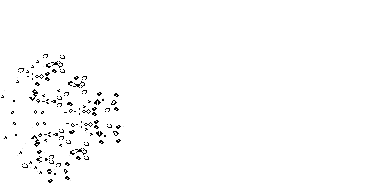Life and Self Replicator (1)
What is Life? The most commonly known definition of life is definition in biology. Life is considered a characteristic of something that exhibits all or most of the traits including homeostasis, organization, growth, adaptation, response to stimuli and reproduction.
Some scientists said living beings were thermodynamic systems with an organized molecular structure that can reproduce itself and evolve as survival dictates. Thermodynamically, life can be defined as an open system that creates imperfect replicas of itself using the surrounding environment. Another view is the definition of Stuart Kauffman, who sees Life as an autonomous agent or multi-agent system capable of reproducing himself.
Life by Wikipedia
What makes a planet habitable?
Autonomous Agents in a Book "Science and Ultimate Reality: Quantum Theory, Cosmology, and Complexity"
Why Is the Definition of Life So Elusive? Epistemological Considerations
Game of Life
Some scientists said living beings were thermodynamic systems with an organized molecular structure that can reproduce itself and evolve as survival dictates. Thermodynamically, life can be defined as an open system that creates imperfect replicas of itself using the surrounding environment. Another view is the definition of Stuart Kauffman, who sees Life as an autonomous agent or multi-agent system capable of reproducing himself.
Another interesting definition was suggested by Nobel-laureate physicist Erwin Schrödinger. In his book, "What is Life?", Schrödinger originally stated that life feeds on negative entropy, or negentropy. Nowadays, many biophysicists support this definition. In other words, living processes can be viewed as a delay of the spontaneous diffusion or dispersion of the internal energy of biological molecules towards more potential microstates.
But, I want to follow the definition of general living systems theory suggested by Woodruff T. Sullivan in his book "Planets and Life: The Emerging Science of Astrobiology". In this perspective, living systems are open self-organizing living things that interact with their environment. These systems are maintained by flows of information, energy, and matter. Therefore, life can be viewed as a dynamical relationship between the organisms and the surrounding environment, rather than as a collection of multiple decomposed components.
There is an interesting computer game called "Game of Life". It is a cellular automaton devised by the British mathematician John H. Conway in 1970. The world of this game is cells with infinite two-dimensional lattice. Each cell has one of two states: dead or alive. Each cell undergoes the following four rules through interaction with the surrounding eight neighboring cells.
- Any live cell with fewer than two live neighbours dies, as if caused by underpopulation.
- Any live cell with two or three live neighbours lives on to the next generation.
- Any live cell with more than three live neighbours dies, as if by overpopulation.
- Any dead cell with exactly three live neighbours becomes a live cell, as if by reproduction.
The first given pattern is the seed of this system. The first generation adopts the rules given above to transform all the cells, and at the same time, some cells live and some die. These rules are applied repeatedly, causing a change of later generations, which is a simple game that repeats endlessly. The rules are simple, but this game has produced clusters of living 2D cells in myriad patterns. For example, the "Life" below shows that a pattern called glider guns wakes up and continues to fire new gliders.
Conway wanted to create a game like this in the 1940s when he was interested in what John von Neumann had suggested. Neumann tried to make a hypothetical machine that could continue to make its clone, he succeeded in making a very complex mathematical model for such a machine, but his theory was too complicated to understand easily. Conway has succeeded in simplifying von Neumann's ideas and making them more intuitive and easy to understand. The game was first publicly known in October 1970 issue of Scientific American. In Martin Gardner's column "Mathematical Games," he wrote:
The game made Conway instantly famous, but it also opened up a whole new field of mathematical research, the field of cellular automata ... Because of Life's analogies with the rise, fall and alterations of a society of living organisms, it belongs to a growing class of what are called "simulation games" (games that resemble real life processes).
Conway's Game of Life shows good examples of emergence and self-organization. Since then, scholars in many disciplines, from computer science to physics, biology, mathematics, economics and philosophy, have begun to work on new things only by implementing simple game rules in complex patterns.
Now, let's compare "Life," which is often seen around you, and "Life," which appears in Conway's game. What is different and what is similar? And what if we compare it to the definition of "Life" we adopted? I will drill down deeply on this issue in next post. Following link has great web simulation of Conway's "Game of Life". Just try it and have fun!
References
Life by Wikipedia
What makes a planet habitable?
Autonomous Agents in a Book "Science and Ultimate Reality: Quantum Theory, Cosmology, and Complexity"
Why Is the Definition of Life So Elusive? Epistemological Considerations
Game of Life



Comments
Post a Comment